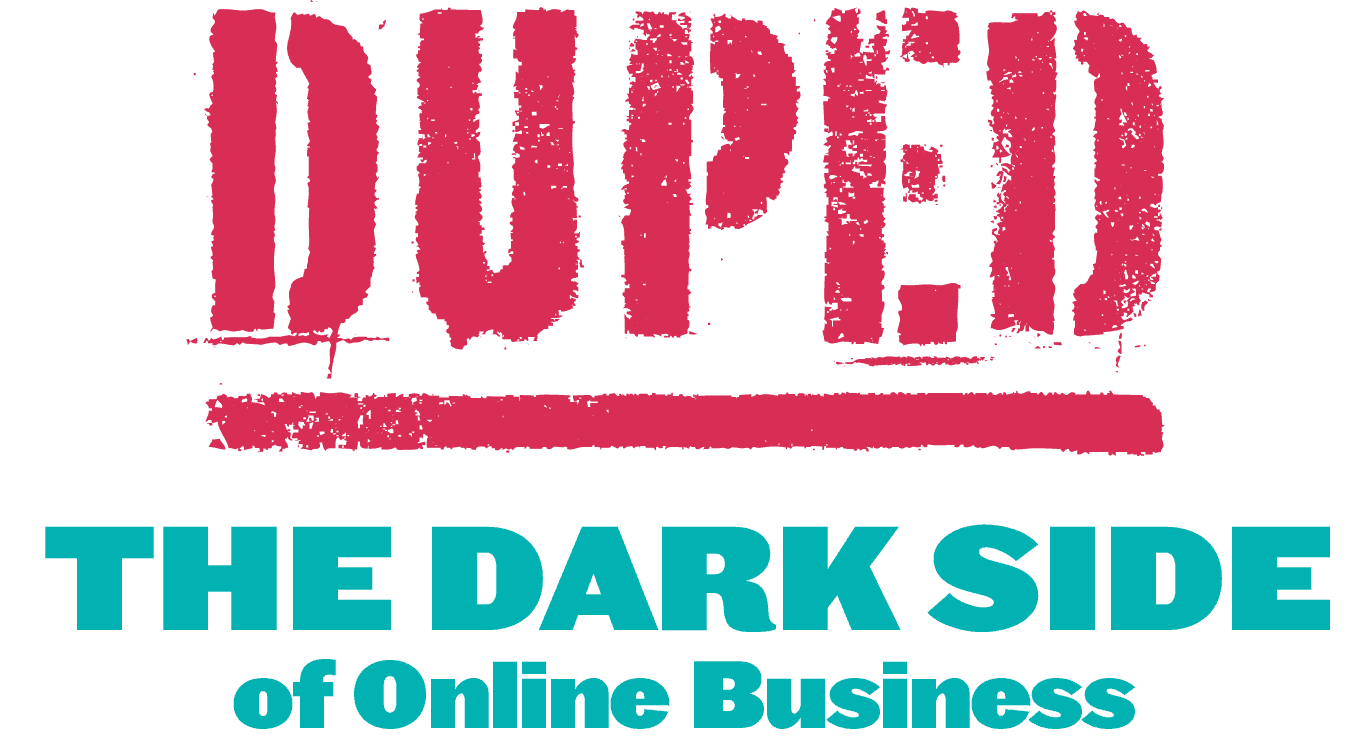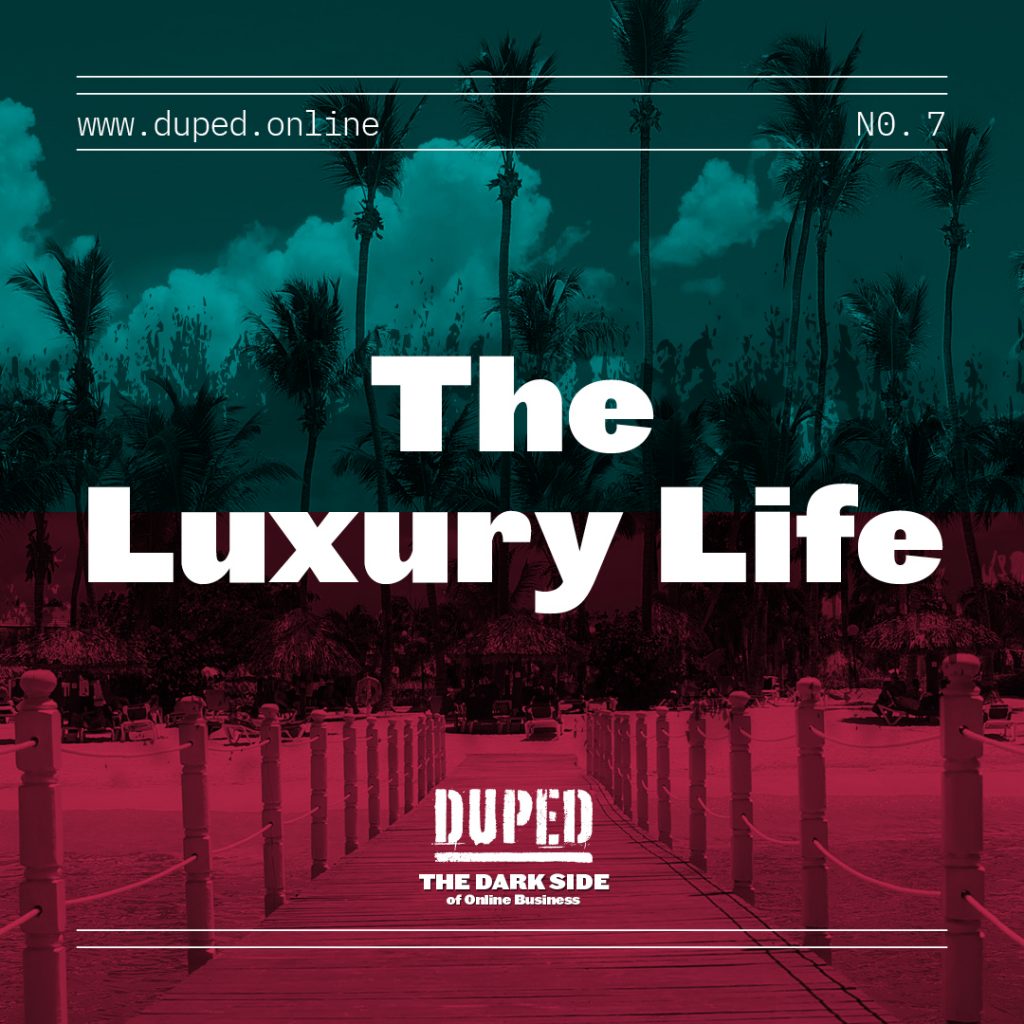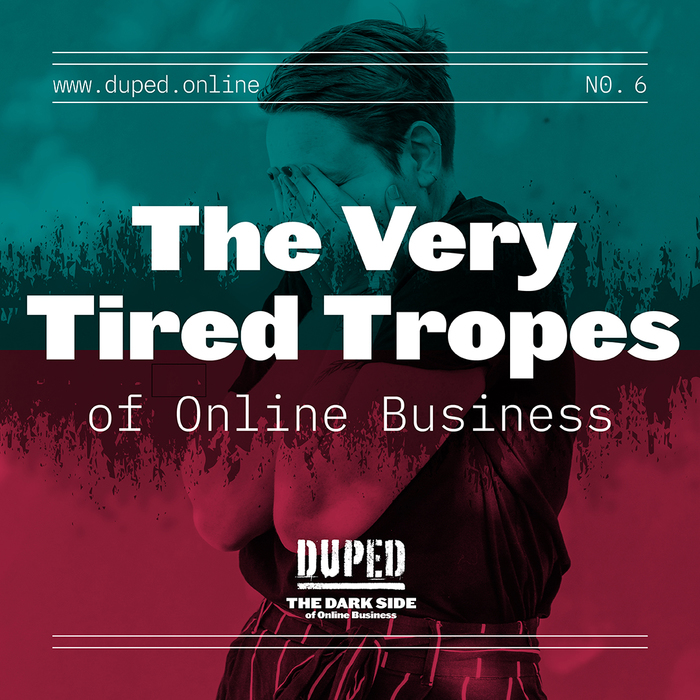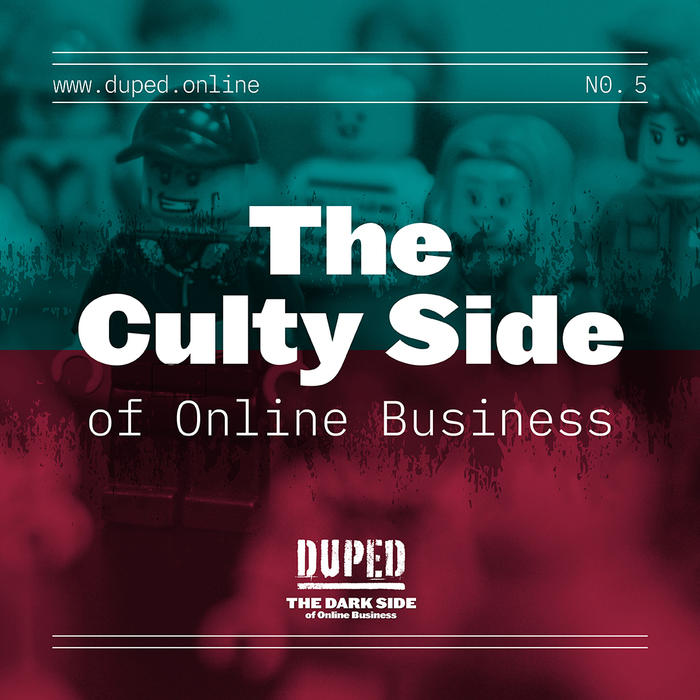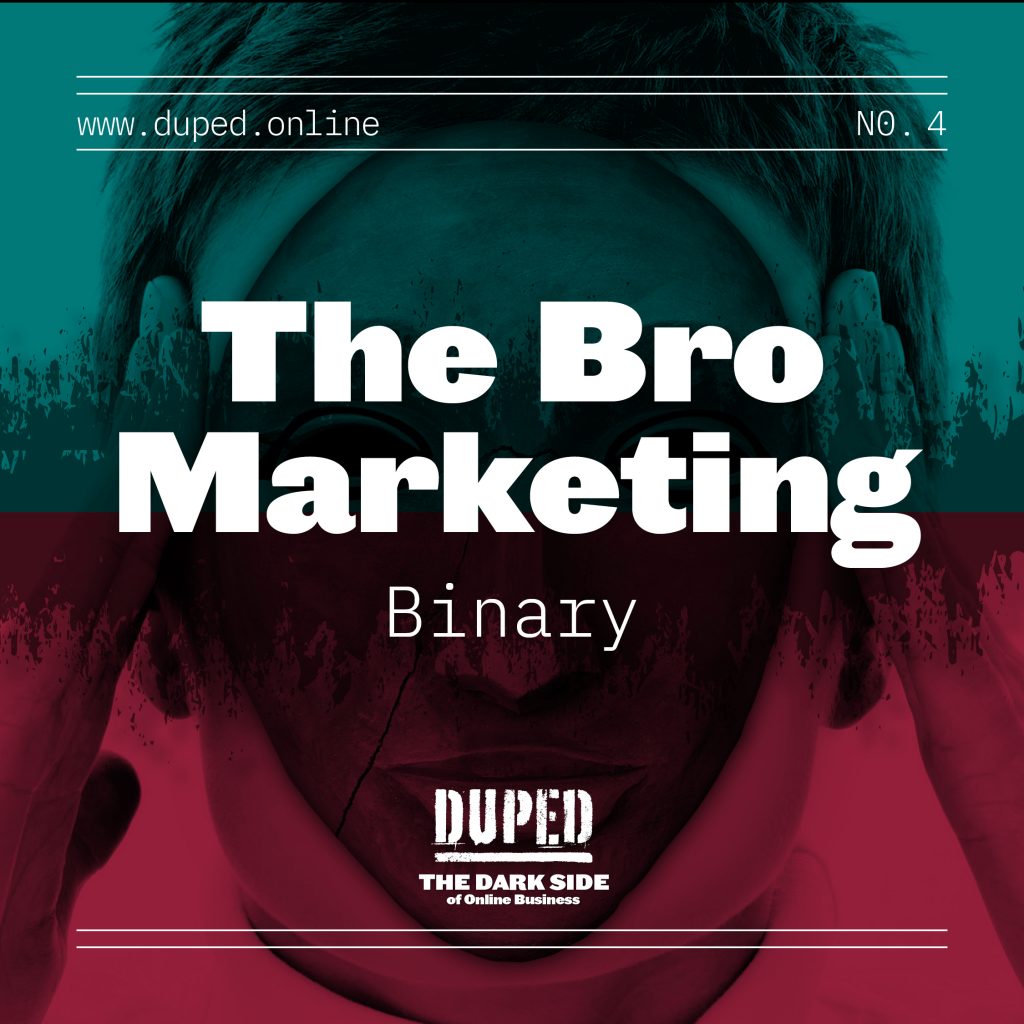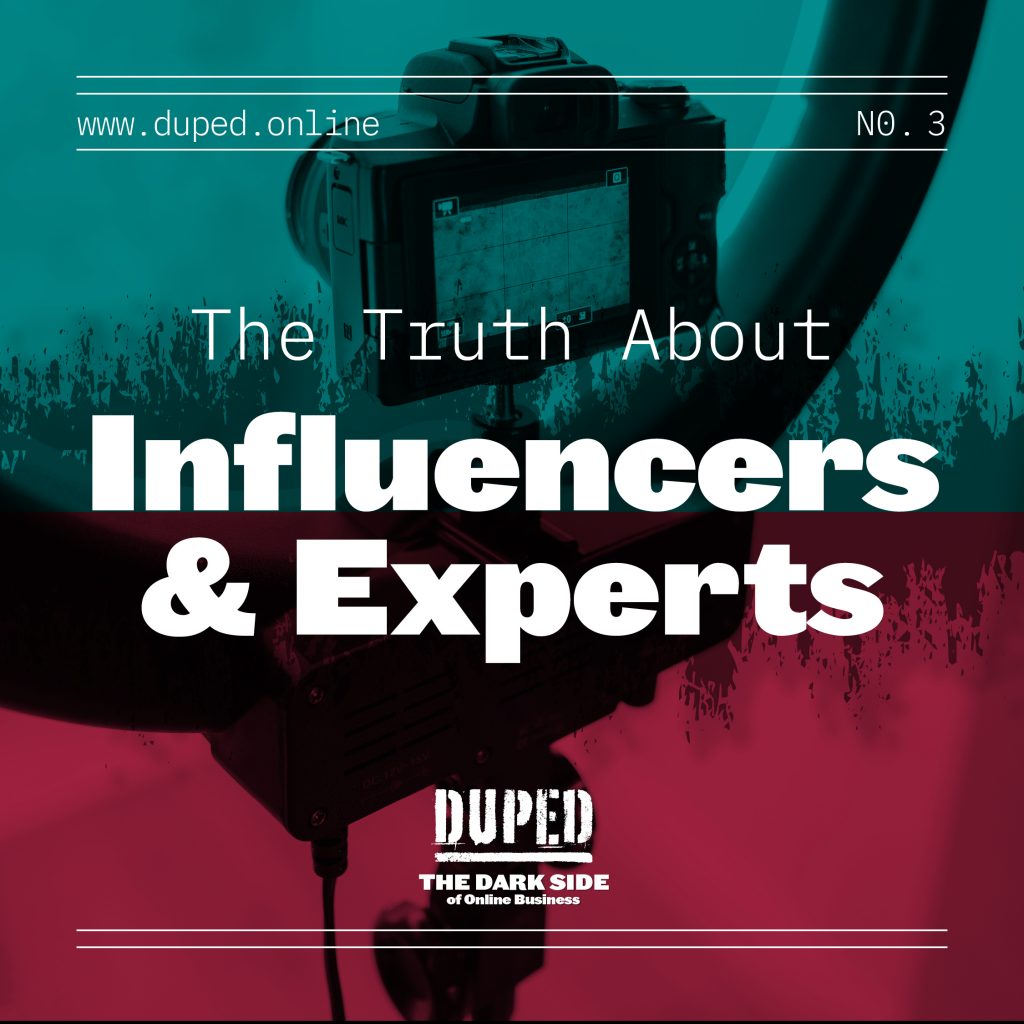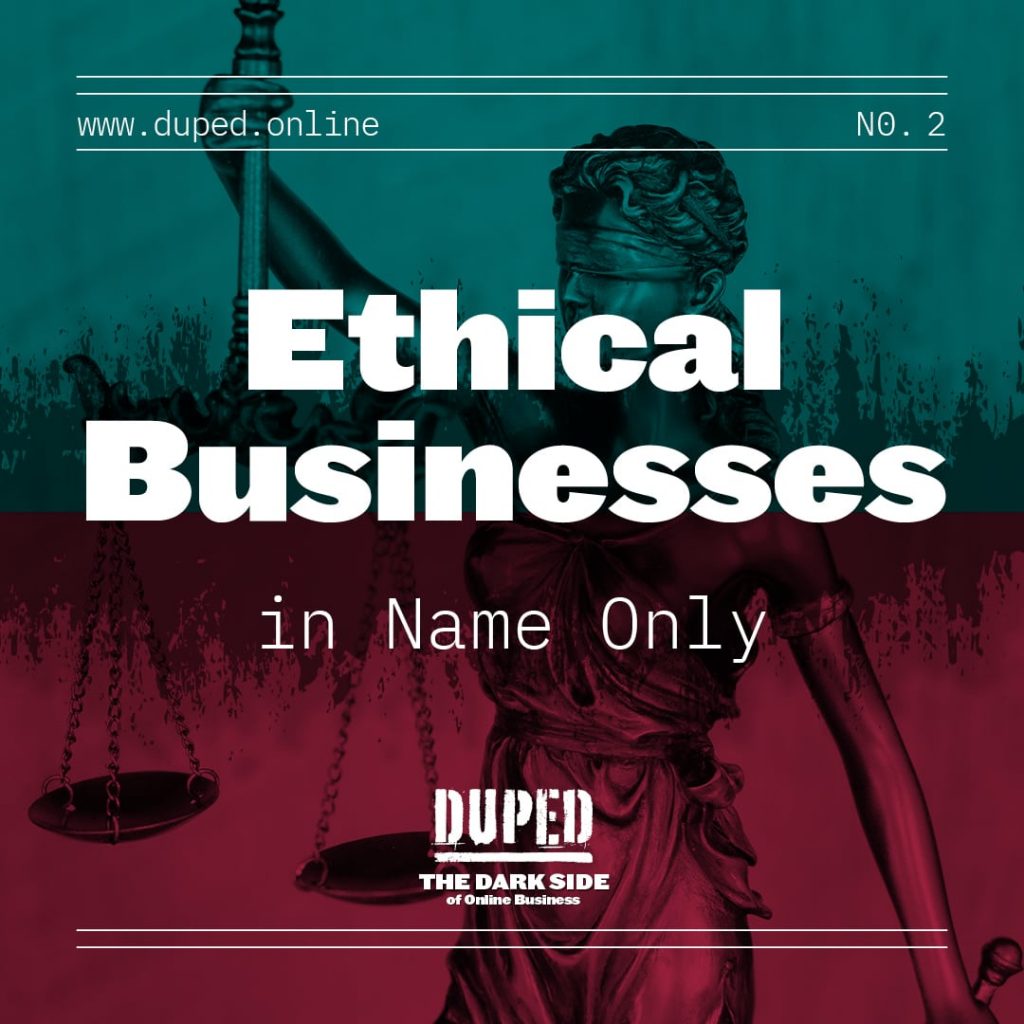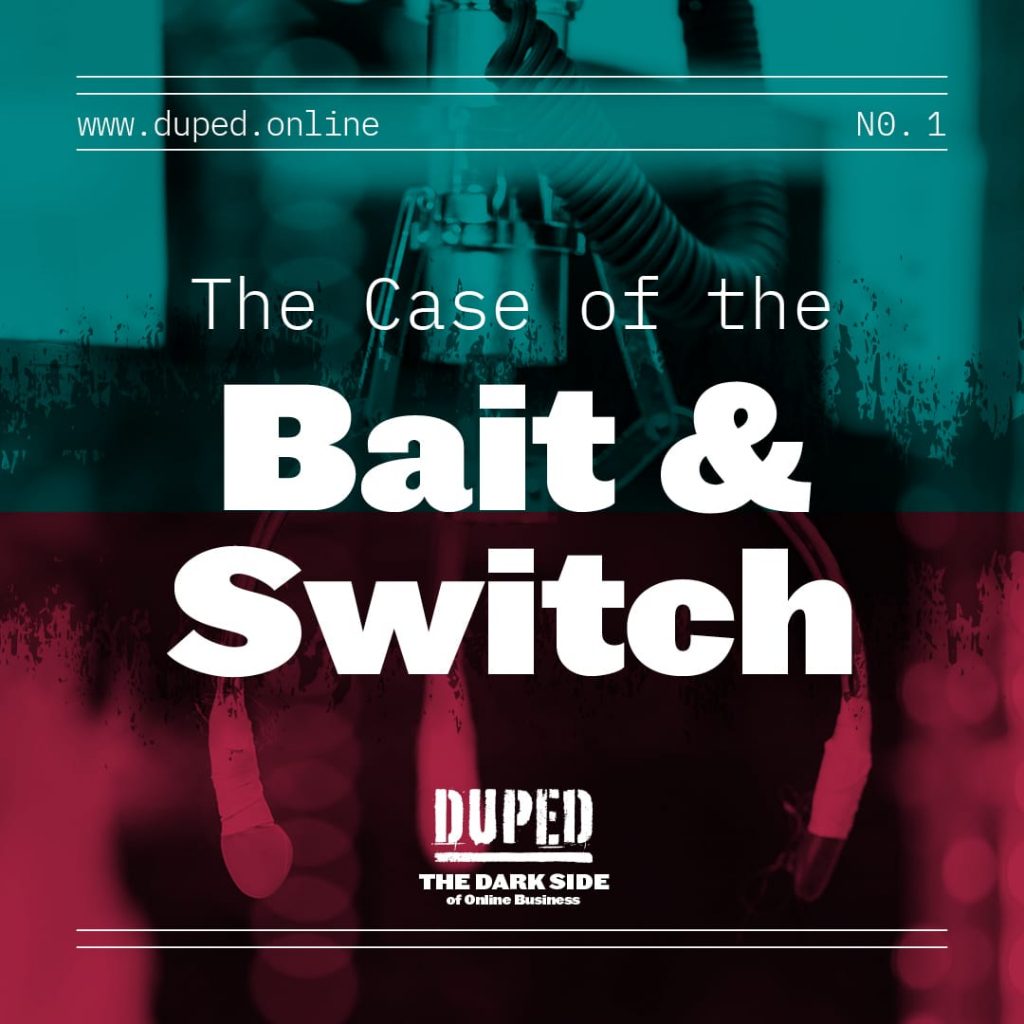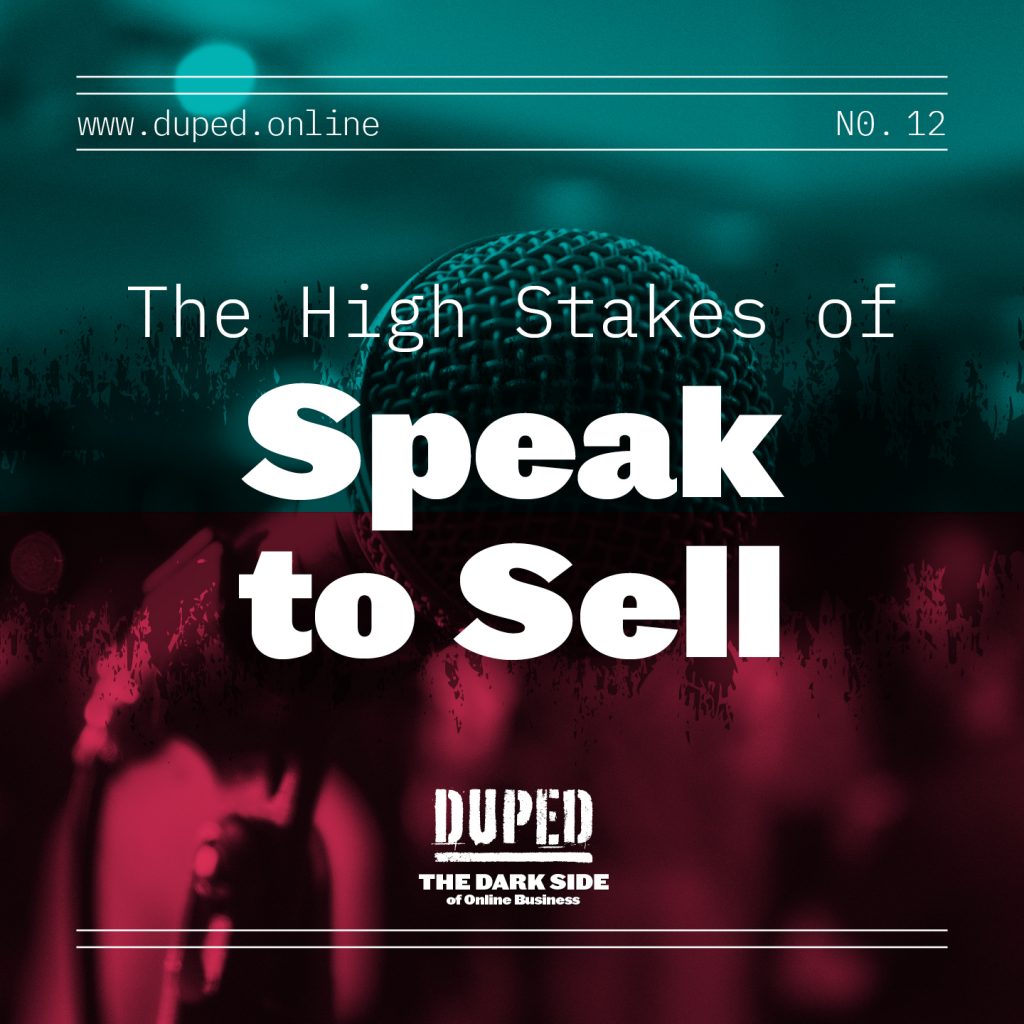
The High Stakes of Speak-to-Sell
“Run to the back of the room. This offer is only good for today. You’ll never be able to get this price again. You deserve to invest in yourself.”
Does any of that sound familiar? Phrases like that are a mainstay of speak-to-sell events. Where celebrity entrepreneurs use high pressure and cult-like tactics to get you to buy.
In this episode of Duped, we are breaking down the speak-to-sell phenomenon and how speak-to-sell leads to the same tactics being used in webinars and summits.

What is Speak-to-Sell Exactly?
When Michelle first started her business nearly 10 years ago, speak-to-sell was all the rage.
Here’s the situation: you would attend an event or conference (usually the ticket price was pretty cheap but not always), and the event would have the goal of selling a “high ticket” program like a mastermind or group coaching.
Now, speak-to-sell tactics can be found in webinars and summits. Webinars tend to be 60-90 minute events that pitch a course. Whereas summits typically span four or five days and can have over 30 speakers, the goal is to build an email list and launch a “high ticket program.”
Violation of Agency
Our biggest issue with speak-to-sell at events is that it’s hard to leave the pitch, whereas with webinars you can close your browser window at any time. Summits you have a choice about what speakers to listen to.
When we attend live events, we are putting a great deal of trust in the individual running the event because they are in control of the schedule for the next three days. When we eat, when we pee, when the day ends, what we listen to.
We have far less freedom of choice when we attend an event than a webinar or summit.
The BITE Model & Live Events
The best way to look at speak-to-sell live events is through Dr. Stephen Hassan’s BITE model.
According to Hassan’s freedom of the mind website, “the BITE Model describes the specific methods that cults use to recruit and maintain control over people. “BITE” stands for Behavior, Information, Thought, and Emotional Control.”.
Behavior
Events utilizing speak-to-sell methods to boost back-of-the-room sales excel at controlling your behavior.
For example, Tony Robbins is infamous for his long 12-16 hour events with no bathroom breaks or lunch/dinner breaks.
Speak to sell techniques that control behavior:
- Keeping the room at a cooler temperature (high arousal).
- No breaks or audience members don’t know when breaks are coming.
- Creating a high arousal state by dancing (god, I hate group dancing).
- Controlling when people eat and sleep.
Some of this may seem innocuous. A minor inconvenience but when coupled with the other aspects of the BITE model, control of the environment and your behavior is a way to break you down and make you buy.
Information
Have you ever been to an event where the leader promises an insider secret but when it’s time to deliver, they tell you that you need to buy in order to get the secret?
This is information control!
- Insider’s secrets touted through the whole weekend
- No agenda
- Us vs. them teaching (people like us do things like this)
- The use of confession to ratchet up the reason you should buy
Thought
Let’s face it, unethically run speak-to-sell events are all about thought control. The goal of these events is to indoctrinate you into the celebrity entrepreneurs’ way of thinking.
You learn exactly how you should run your business. Us vs. them (or my client vs. the rest of the world) somehow have the answer to all your questions and struggles.
Additionally, other techniques such as
- High vibe only (there are only good thoughts allowed).
- Black and white thinking (my way is the only way).
- Not allowed to challenge the leader.
- The use of thought-terminating cliches to shut down consent.
Emotion
The goal of the use of these techniques is to create a high arousal experience. Emotions run high and you can feel like the only way to escape is to buy.
Michelle remembers an event where she witnessed people crying outside the door because they felt like the celeb entrepreneurs were the only solution for their business and they couldn’t afford the five-figure price tag.
How do these events manipulate emotions?
- Your problems are all your fault.
- Promote feelings of guilt, unworthiness, and how you’re not living up to your potential.
- Teach techniques to stop “negative” emotions and doubt.
- Instill fear of what will happen if you don’t buy.
We realize all of this may sufficiently scare you away from ever going to another live event where the organizer is selling something.
Knowledge is power, and like everything else there is a lot of grey area.
Now, let’s turn to how selling from the stage leads to the persuasive dark arts being used in webinars and summits.
Persuasion Dark Arts
Last season, we talked about the Bro Marketing Binary episode, these bro marketing tactics run rampant in live events, webinars, and summits.
As a reminder, bro marketing is the act of promoting products and services using social triggers (i.e., scarcity, authority, social proof, etc.) so that you shut down your prospect’s critical thinking ability so they buy now.
Remember, the Elaboration Likelihood Models says that in order for us to critically process a persuasive message we’ve got to be both motivated to process the message and able to do so.
The Use of Overwhelm to Shut Down Critical Thinking
Webinars, summits, and live events can overwhelm us with information and when we are overwhelmed, we can’t critically think about purchasing decisions.
Why does there need to be 20+ speakers at a summit? Or webinars that are brain dumps or overcomplicated? Or events that give you so much education that it’s exhausting?
When we are overwhelmed, we rely more on Cialdini’s Weapons of Influence to make decisions.
- Scarcity
- Authority
- Social Proof
- Reciprocity
- Liking
- Commitment & Consistency
If you want a full breakdown of how to protect yourself from the persuasion dark arts, check out Michelle’s defense against bro marketing post where she breaks down each tactic and how to protect yourself.
How do you protect yourself and your business from all the persuasion shenanigans?
What to Ask Yourself Before Attending a Live Event, Summit, or Webinar
Now, there are plenty of great events, webinars and summits that you can attend. You don’t need to swear yourself off these events. However, here are some things you can ask yourself or think about before you decide to attend an event.
- Costs: Think about how much you’re paying for the event, if it is a low fee, given as a bonus as a part of a program, you’re more likely to be sold too!
- Trust: How much do you trust the person putting on the event? If you know they run their business ethically, you’re less likely to be exposed to these tactics
- Transparency: For live events is their schedule, agenda and program available? No agenda means they are in ultimate control of your time and environment
- Event Structure: Does that schedule or the information being presented feel overwhelming? Are there a ton of speakers all selling something? Or are there ample room for breaks? Think about the summit with 30 speakers, do you need to try to listen to them all?
You always have the right to leave the room, close the tab, opt-out, We realize for live events this can be disruptive — but you always have a choice. FOMO be damned!
Links for this Episode:
- Steven Hassan’s BITE Model of Authoritarian Control
- Steven Hassan Explains Undue Influence
- Dr. Robert Cialdini
- Maintenance Phase Rachel Hollis
- Maggie’s Book Report on Rachel Hollis
- Michelle’s Defense Against the Bro Marketing Dark Arts
- Elaboration Likelihood Models
- Duped – The Bro Marketing Binary
- Duped – The Culty Side of Online Business
- Amanda Montell Cultish
- Sounds Like a Cult Podcast
- Marisa Corcoran The Copy Chat
- Radical Summits
Join the

Patreon

for only $7/month and get a
monthly bonus episode,
behind-the-scenes content
and more.
Recent Episodes of Duped
- « Previous
- 1
- …
- 4
- 5
- 6
